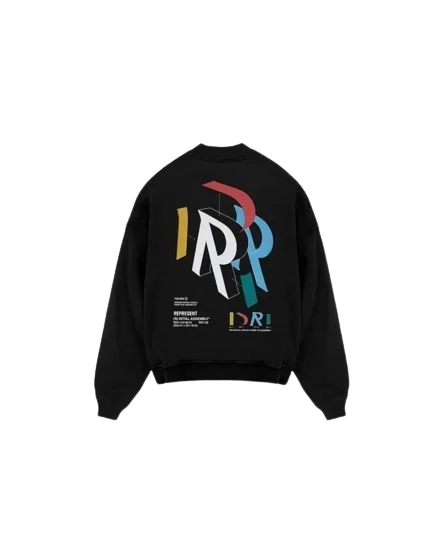The sweatshirt, once a simple piece of athletic wear, has transcended its humble origins to become a staple in the fashion industry. Its journey from the sports field to the runway highlights not only its versatility but also its cultural significance Represent Sweatshirt This essay explores the evolution of the sweatshirt, its role in various fashion movements, and its enduring appeal.
Origins and Early Adoption
The sweatshirt was invented in the 1920s by Benjamin Russell Jr., a football player who sought a more comfortable alternative to the itchy wool jerseys of the time. Made from cotton, the new garment was not only more comfortable but also more practical for athletes Represent T Shirt Its ability to absorb sweat and provide warmth without overheating made it an instant hit among sportsmen.
The initial adoption of the sweatshirt was primarily within the realm of sports. Colleges and universities across the United States began incorporating sweatshirts into their athletic uniforms. The practicality of the garment soon caught the attention of non-athletes, and it wasn’t long before sweatshirts became popular casual wear.
The Rise of the Sweatshirt in Popular Culture
The sweatshirt’s transition from sportswear to everyday fashion can be traced back to the mid-20th century RepresentHoodie In the 1950s and 1960s, the sweatshirt began to appear in popular culture, worn by icons such as James Dean and Steve McQueen. These figures helped to cement the sweatshirt’s status as a symbol of rebellion and cool, aligning it with the burgeoning youth culture of the time.
During the 1970s and 1980s, the sweatshirt experienced a surge in popularity due to the rise of hip-hop culture. Artists and fans alike embraced the garment for its comfort and versatility. The oversized sweatshirt, in particular, became a hallmark of the hip-hop aesthetic. This era also saw the advent of branded sweatshirts, with logos and graphics becoming key elements of the design.
High Fashion and the Sweatshirt
The 1990s marked a significant turning point for the sweatshirt Represent Clothing as high fashion designers began to take notice of its potential. The rise of streetwear as a legitimate fashion category brought the sweatshirt to the forefront of designer collections. Brands such as Tommy Hilfiger, Ralph Lauren, and Calvin Klein incorporated sweatshirts into their lines, blending casual and luxury elements.
In the 2000s and 2010s, the influence of streetwear on high fashion became even more pronounced. Designers like Virgil Abloh, founder of Off-White, and Demna Gvasalia, creative director of Balenciaga, reimagined the sweatshirt in innovative ways. These designers played with proportions, materials, and embellishments, transforming the sweatshirt into a high-fashion statement piece.
The Sweatshirt as a Canvas for Expression
One of the most significant aspects of the sweatshirt’s evolution is its role as a canvas for personal and cultural expression. Graphic sweatshirts, emblazoned with everything from band logos to political messages Represent have become a popular medium for individuals to convey their identities and beliefs.
In recent years, the customization of sweatshirts has become increasingly accessible, thanks to advancements in printing technology and the rise of DIY fashion. This trend has democratized fashion, allowing people to create unique garments that reflect their personal style and values.
Sustainability and the Future of the Sweatshirt
As the fashion industry grapples with issues of sustainability, the sweatshirt is also undergoing a transformation. Brands are increasingly adopting eco-friendly practices in the production of sweatshirts, such as using organic cotton, recycled materials, and sustainable dyeing processes.
The rise of secondhand fashion and the popularity of vintage sweatshirts are also contributing to a more sustainable approach to this iconic garment. By embracing circular fashion, consumers are reducing waste and extending the lifespan of their clothing.
Conclusion
The sweatshirt’s journey from a utilitarian piece of sportswear to a symbol of cultural and fashion innovation is a testament to its enduring appeal. Its versatility, comfort, and ability to adapt to changing trends have secured its place in the annals of fashion history. As we look to the future, the sweatshirt will undoubtedly continue to evolve, reflecting the values and aspirations of each new generation.




